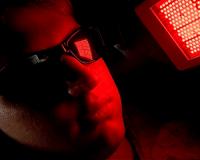 |
Washington DC (SPX) Mar 23, 2011 Recent research aboard the space shuttle is giving scientists a better understanding of how infectious disease occurs in space and could someday improve astronaut health and provide novel treatments for people on Earth. "With our space-based research efforts, including the International Space Station, we are not only continuing our human presence in space, but we are engaged in science that can make a real difference in people's lives here on Earth," said NASA Administrator Charles Bolden. "NASA's leadership in human spaceflight allows us to conduct innovative and ground-breaking science that reveals the unknown and unlocks the mysteries of how disease-causing agents work." The research involves an opportunistic pathogen known as Pseudomonas aeruginosa, the same bacterium that caused astronaut Fred Haise to become sick during the Apollo 13 mission to the moon in 1970. Scientists studying the bacterium aboard the shuttle hope to unlock the mysteries of how disease-causing agents work. They believe the research can lead to advanced vaccines and therapies to better fight infections. The findings are based on flight experiments with microbial pathogens on NASA shuttle missions to the International Space Station and appear in a recent edition of the journal Applied and Environmental Microbiology. "For the first time, we're able to see that two very different species of bacteria - Salmonella and Pseudomonas - share the same basic regulating mechanism, or master control switch, that micro-manages many of the microbes' responses to the spaceflight environment," said Cheryl Nickerson, associate professor at the Center for Infectious Diseases and Vaccinology, the Biodesign Institute at Arizona State University (ASU) in Tempe. "We have shown that spaceflight affects common regulators in both bacteria that invariably cause disease in healthy individuals [Salmonella] and those that cause disease only in people with compromised immune systems [Pseudomonas]." By studying the global gene expression patterns in bacterial pathogens like Pseudomonas and Salmonella, Nickerson's team learned more about how they react to reduced gravity. Pseudomonas aeruginosa can coexist as a benign microbe in healthy individuals, but poses a serious threat to people with compromised immune systems. It is the leading cause of death for those suffering from cystic fibrosis and is a serious risk to burn victims. However, a high enough dosage of Salmonella typhimurium always will cause disease, even in healthy individuals. During the initial study in 2006, two bacterial pathogens, Salmonella typhimurium and Pseudomonas aeruginosa, and one fungal pathogen, Candida albicans, were launched to the station aboard shuttles. They were allowed to grow in appropriately contained vessels for several days. Nickerson's team was the first to evaluate global gene and protein expression (how the bacteria react at the molecular level) and virulence changes in microbes in response to reduced gravity. "We discovered that aspects of the environment that microbes encountered during spaceflight appeared to mimic key conditions that pathogens normally encounter in our bodies during the natural course of infection, particularly in the respiratory system, gastrointestinal system and urogenital tract," Nickerson said. NASA's Advanced Capabilities Division Director, Benjamin Neumann added that, "This means that in addition to safeguarding future space travelers, such research may aid the quest for better therapeutics against pathogens here on Earth." The initial study and follow-on space experiments show that spaceflight creates a low fluid shear environment, where liquids exert little force as they flow over the surface of cells. The low fluid shear environment of spaceflight affects the molecular genetic regulators that can make microbes more infectious. These same regulators might function in a similar way to regulate microbial virulence during the course of infection in the human body. "We have now shown that spaceflight conditions modified molecular pathways that are known to be involved in the virulence of Pseudomonas aeruginosa," said Aurelie Crabbe, a researcher in Dr. Nickerson's lab at ASU and the lead author of the paper. "Future work will establish whether Pseudomonas also exhibits increased virulence following spaceflight as did Salmonella." NASA's Fundamental Space Biology Program sponsored and funded the research conducted by Crabbe and Nickerson along with their colleagues at the Biodesign Institute at ASU. They collaborated with the University of Colorado School of Medicine, University of Arizona, Belgian Nuclear Research Center, Villanova University, Tulane University, Affymetrix Inc, and NASA scientists.
Share This Article With Planet Earth
Related Links NASA Space Medicine Technology and Systems
 NASA Light Technology Helps Cancer Patients
NASA Light Technology Helps Cancer PatientsHuntsville AL (SPX) Mar 04, 2011 A NASA technology originally developed for plant growth experiments on space shuttle missions has successfully reduced the painful side effects resulting from chemotherapy and radiation treatment in bone marrow and stem cell transplant patients. In a two-year clinical trial, cancer patients undergoing bone marrow or stem cell transplants were given a far red/near infrared Light Emitting Di ... read more |
|
| The content herein, unless otherwise known to be public domain, are Copyright 1995-2010 - SpaceDaily. AFP and UPI Wire Stories are copyright Agence France-Presse and United Press International. ESA Portal Reports are copyright European Space Agency. All NASA sourced material is public domain. Additional copyrights may apply in whole or part to other bona fide parties. Advertising does not imply endorsement,agreement or approval of any opinions, statements or information provided by SpaceDaily on any Web page published or hosted by SpaceDaily. Privacy Statement |